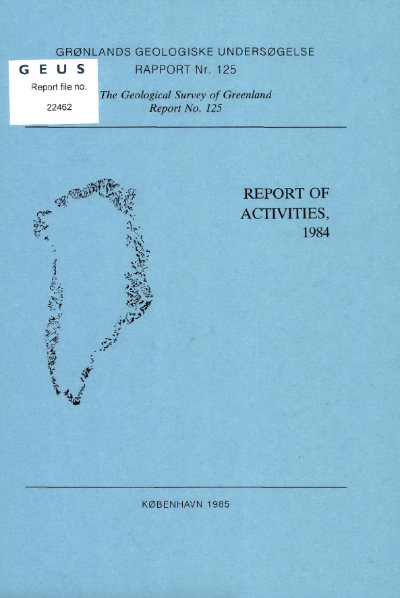Proterozoic age of the Thule Group: new evidence from microfossils
DOI:
https://doi.org/10.34194/rapggu.v125.7883Abstract
This report deals with recent results of a micropalaeontological programme aimed at a biostratigraphic dating of the Thule Group. Earlier results are reported on by Vidal & Dawes (1980). The Thule Group is a several kilometre thick, sedimentary and volcanic sequence that forms large areas of North-West Greenland where it overlies the Archaean-Proterozoic crystalline basernent with profound unconformity (fig. 7). The strata are unmetamorphosed and they form flat-Iying to shallow-dipping outcrops; faulting, crushing, minor folding, and contact 'metamorphic' effects due to basic igneous intrusion, are the only post-depositional disturbances to have affected the sequence. Acritarchs are generally well preserved and, with the exception of rocks affected by contact metamorphism in connection with emplacement of basic rocks, indicate a low index of thermal alteration.
Downloads
Published
Issue
Section
License
This article is distributed under a CC-BY 4.0 licence, permitting free redistribution and reproduction for any purpose, even commercial, provided proper citation of the original work. Author(s) retain copyright over the article contents.


